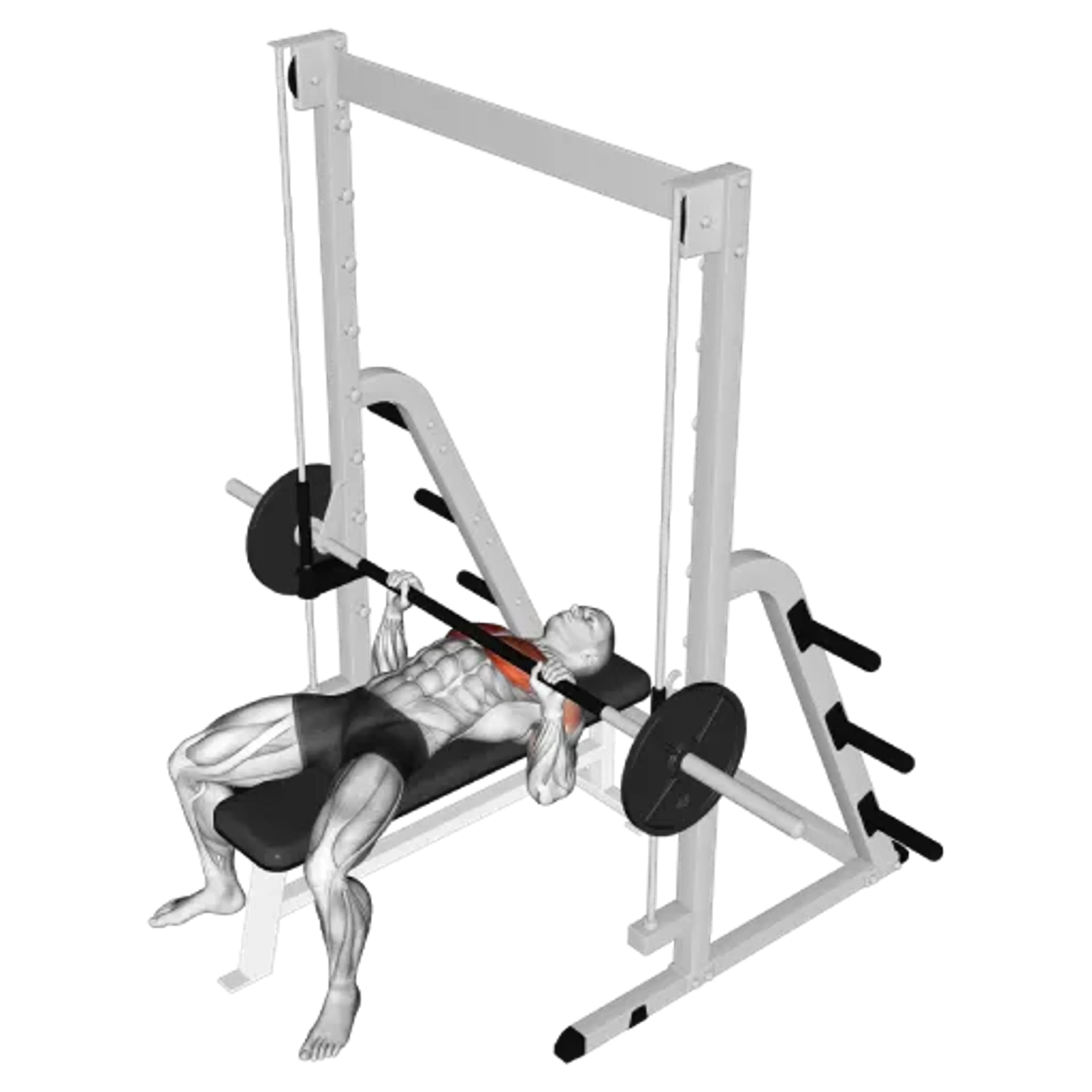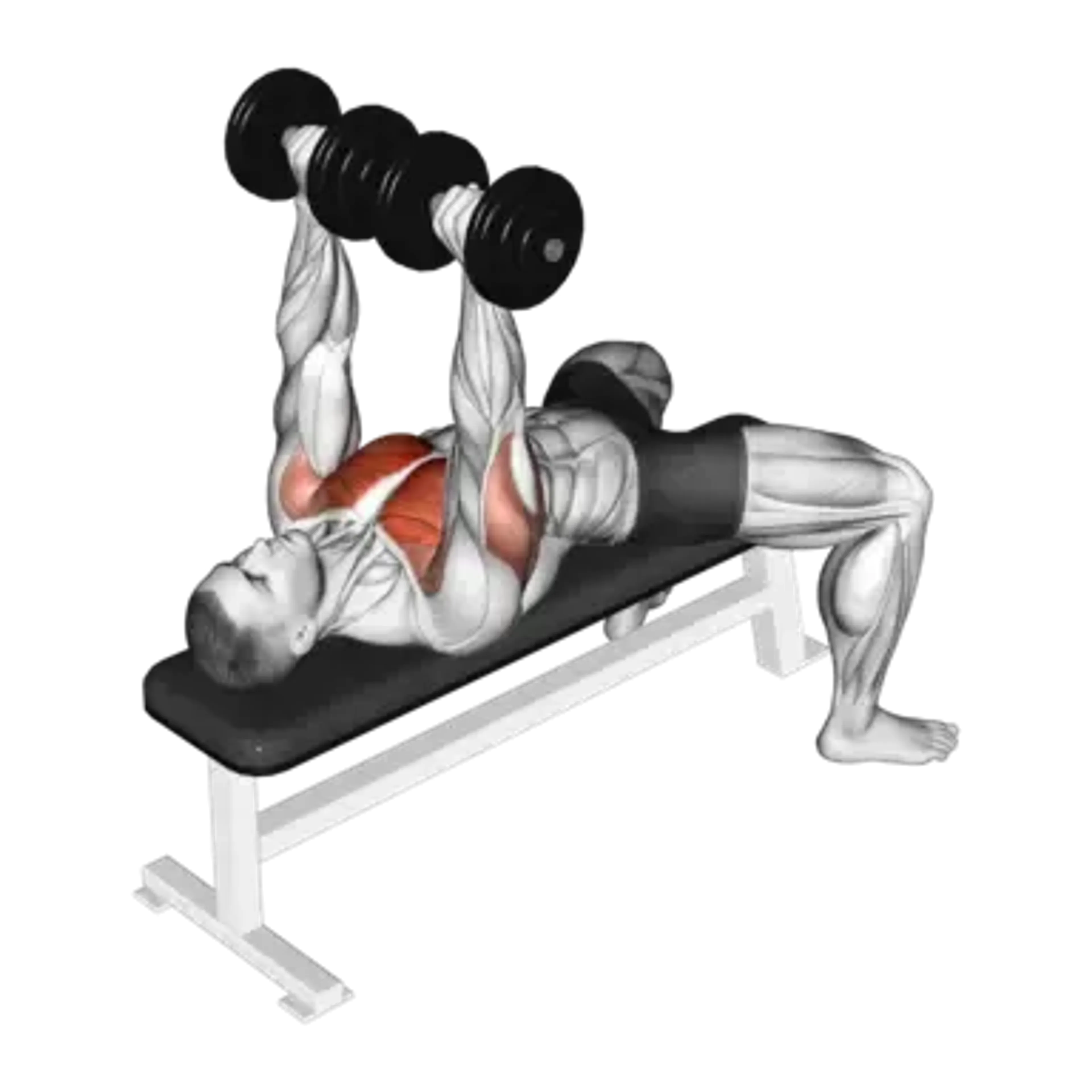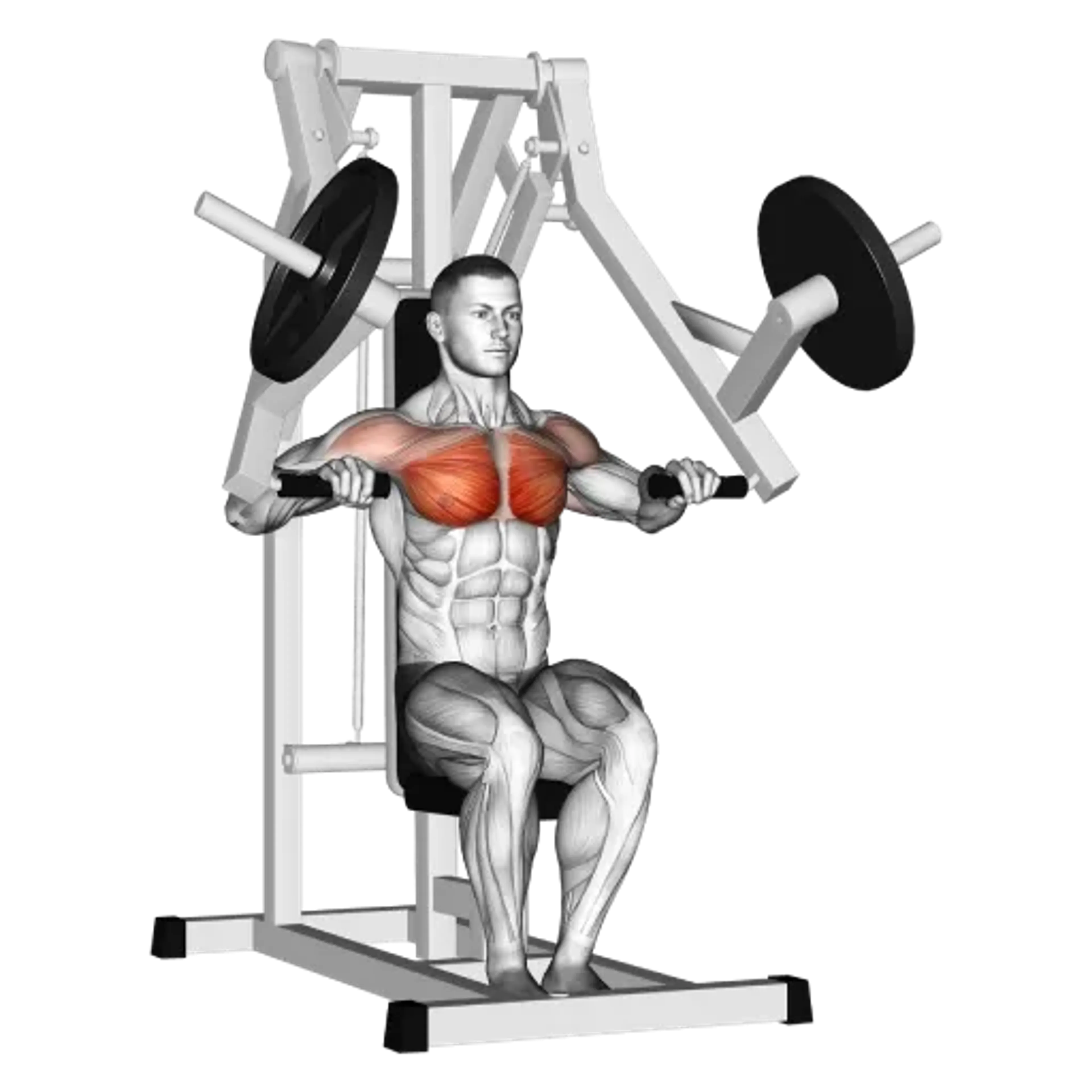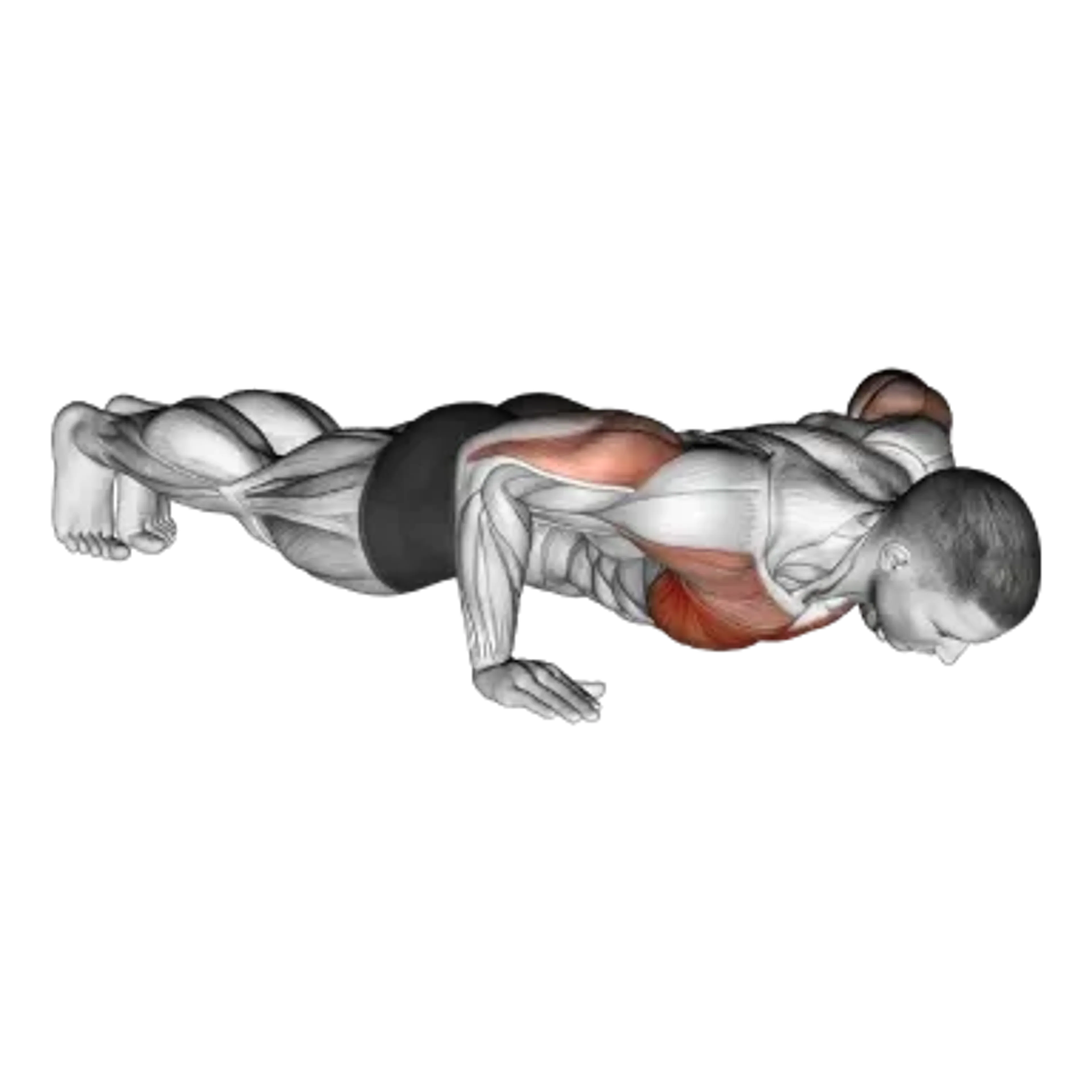Cable Seated Chest Press

Overview
- Primary Focus:
- Chest.
- Equipment:
- Cable and bench.
- Difficulty:
- Beginner.
General Information
Cable Seated Chest Press is a compound exercise that primarily targets the chest and also engages the triceps and front shoulders. It is a beginner-level movement that offers a stable setup and steady cable tension, making it easy to learn and to progressively load.
Because cable resistance keeps tension throughout the range of motion, this press works well for hypertrophy, accessory strength work, and joint-friendly volume. The seated position helps you brace, minimize lower-back involvement, and keep the press path consistent.
You can adjust pulley height to bias different portions of the chest: slightly lower pulleys emphasize the mid-to-upper fibers, while slightly higher pulleys can increase lower-pec contribution. Use a moderate cadence to feel the stretch in the bottom and deliberate force through the mid-range without bouncing.
Muscles Worked
- Pectoralis Major
- Primary
- Triceps Brachii (Long Head)
- High
- Deltoid
- Medium
- Triceps Brachii (Lateral Head)
- Medium
- Triceps Brachii (Medial Head)
- Medium
Instructions
- Set pulleys just below mid-chest height and attach two single handles. Position a bench or seat facing away from the stack.
- Sit tall with feet flat and slight thoracic extension. Retract and gently depress your shoulder blades without arching the lower back hard.
- Grip the handles with neutral wrists. Bring elbows slightly below shoulder height and keep them about 45–60 degrees from your torso.
- Brace your ribcage down, take a small breath, and press the handles forward in a slight downward arc until your elbows are nearly straight.
- Pause briefly with the handles just in front of the chest line. Do not let the shoulders shrug or the wrists bend back.
- Control the return by letting the elbows travel back while keeping the chest lifted. Aim for a light pec stretch without losing scapular position.
- Repeat for the target reps with a smooth tempo, keeping tension on the pecs throughout the range.
Common Mistakes
Injuries
Cable Seated Chest Press is a low risk exercise when performed with proper technique.
Common strain points include the front of the shoulder and wrist extension if the handles are gripped too far back in the palm. Keep elbows at ~45–60 degrees, wrists neutral, and avoid excessive arching.
Manage load and range to what you can control. Regress by raising the pulley slightly or reducing the stretch; progress by adding small weight increments or a brief pause at the chest line.
Stop or modify if you feel sharp shoulder pain, numbness, or if you must shrug to finish reps.
Alternative Exercises
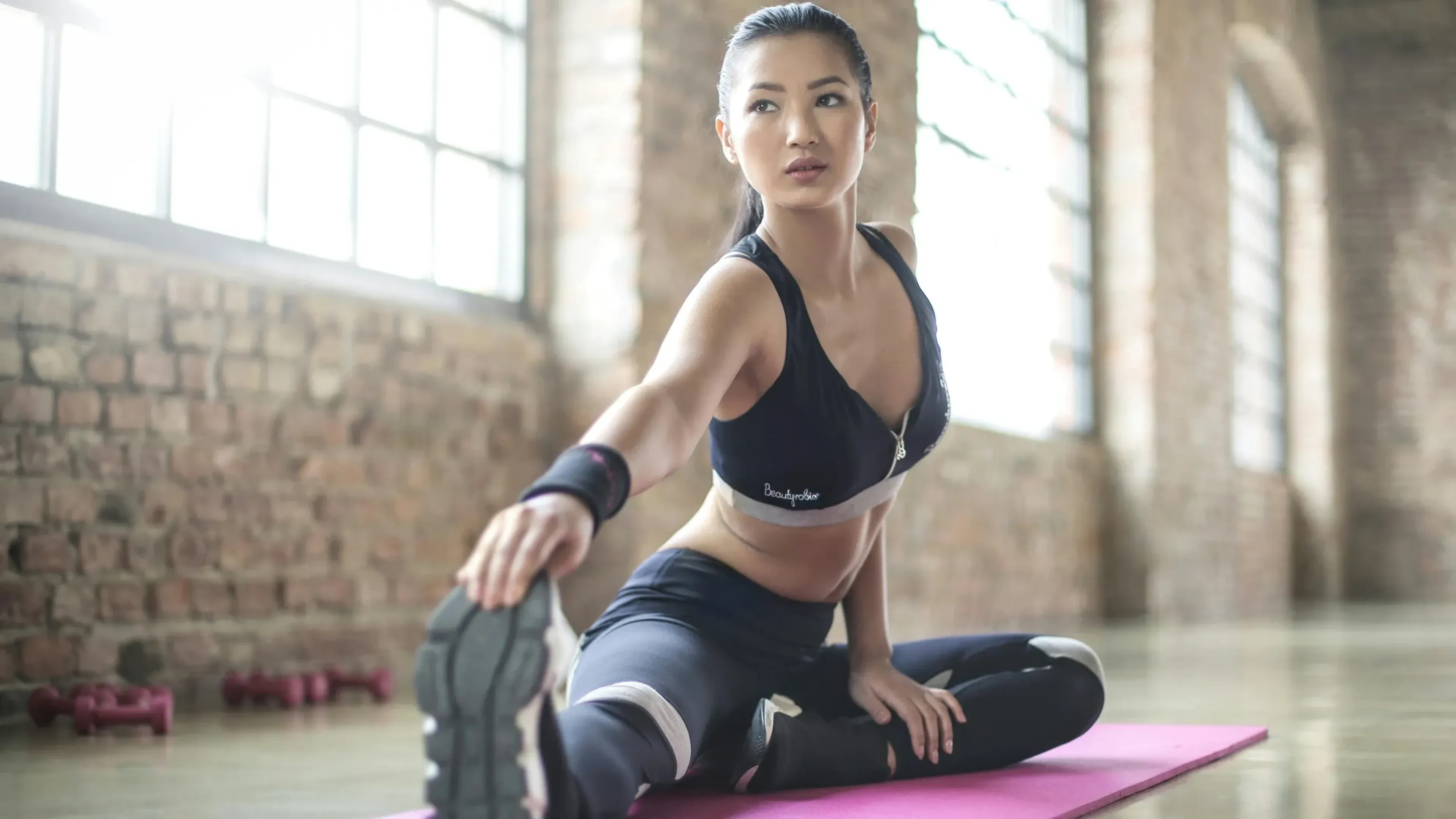
Frequently Asked Questions
- Q: How high should the pulleys be set?
Set them just below mid-chest so the handles travel in line with or slightly below the nipple line during the press.
- Q: What grip works best?
A neutral or slightly pronated grip with straight wrists usually feels strongest and most shoulder-friendly.
- Q: What rep range should I use?
Use 6-12 reps for strength-hypertrophy and 10-15 for controlled volume and longer time under tension.
- Q: Should my elbows tuck or flare?
Slight tuck is preferred - about 45-60 degrees from your torso - to balance pec recruitment and shoulder comfort.
Overview
- Primary Focus:
- Chest.
- Equipment:
- Cable and bench.
- Difficulty:
- Beginner.

